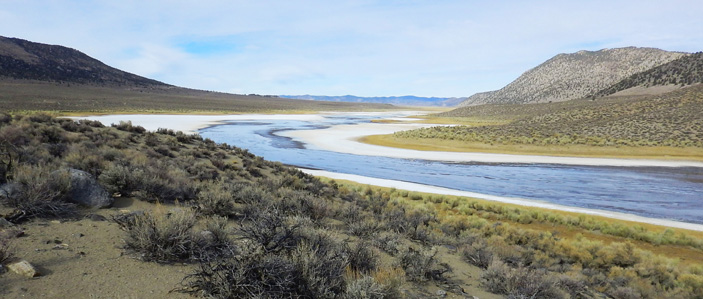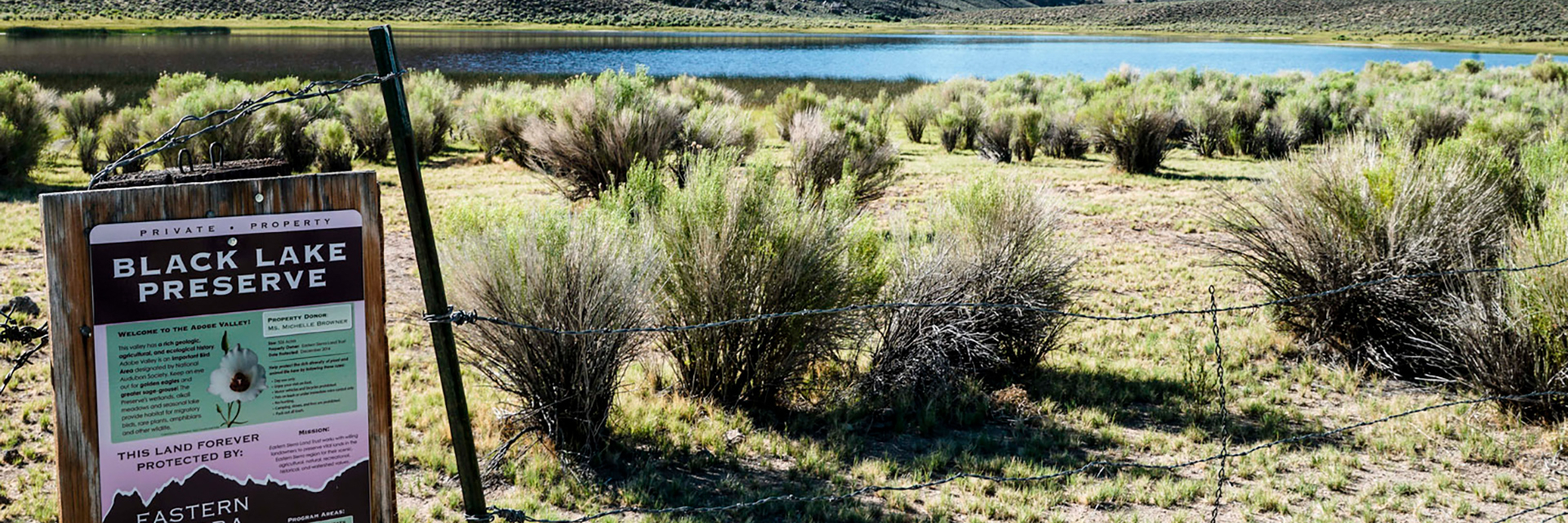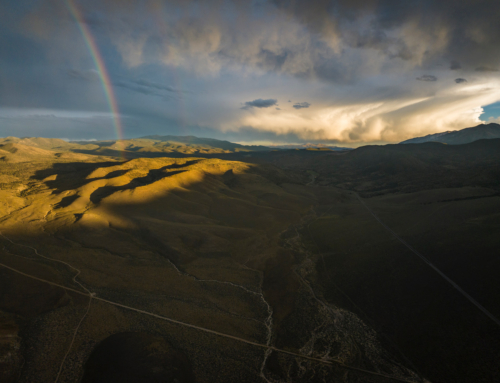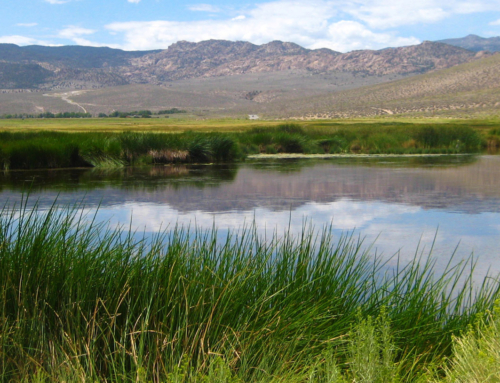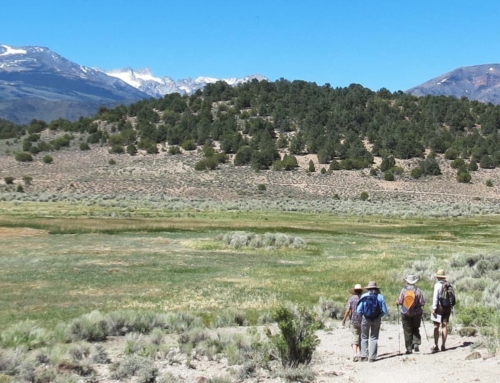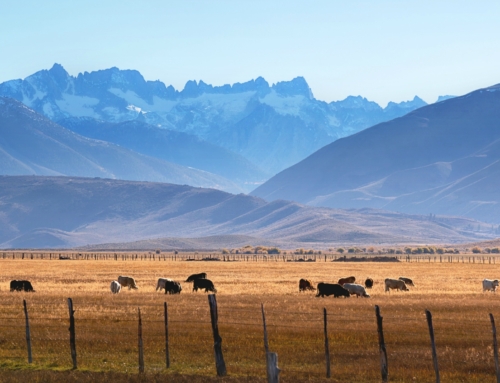Project Description
Black Lake Preserve is open to the public. Please see the “Plan Your Visit” section of this page for more information on how to access the land.
When Michelle Browner first visited the Eastern Sierra, she found a landscape that spoke to her soul. In particular, the area around Benton drew her in — with its charming, quiet character, high mountain silhouettes behind wide-open valleys, and the fragrance of the high desert abloom with sage. The region was a piece of history come alive.
Stretching northwest of Benton along Highway 120, Adobe Valley is known for its “emerald islands”: rare wetlands in the midst of the California desert — and one of the more secluded regions of the Eastern Sierra. At its eastern edge lies Black Lake, a thriving oasis for birds and other wildlife. This valley and its wildness captivated Michelle.
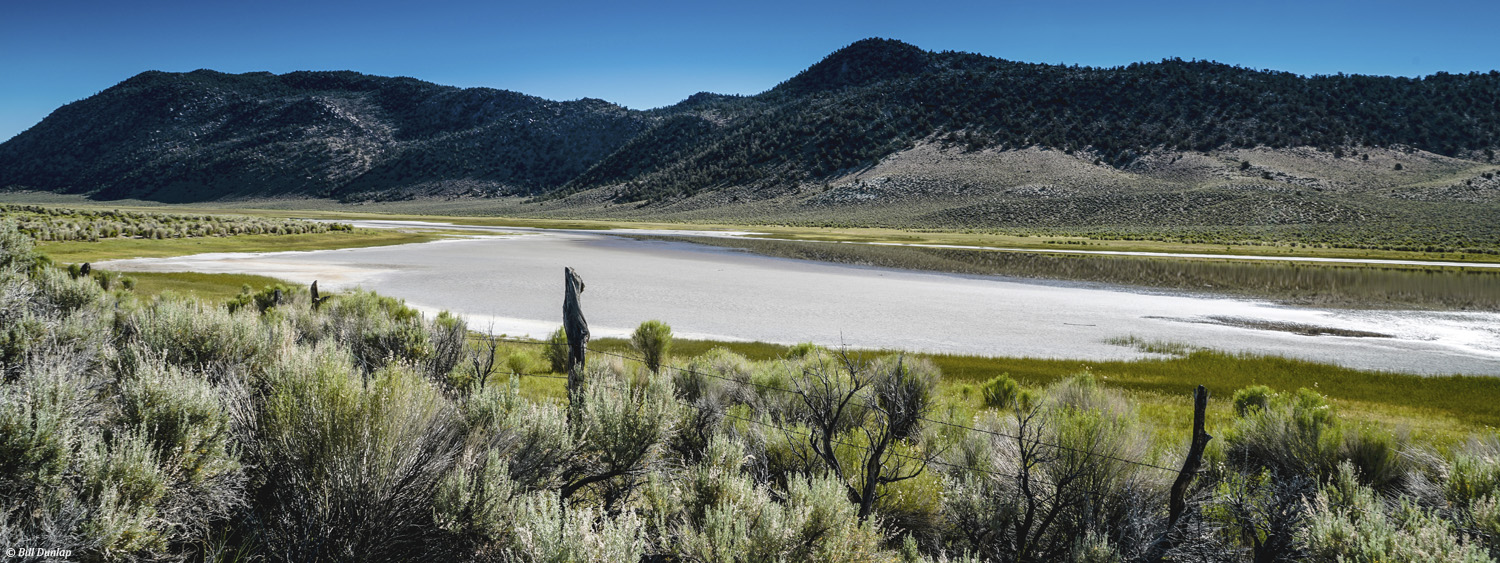
To Michelle Browner, Black Lake was something truly unique. “From the beginning, I felt very deeply that this was a special place,” she recounts. “When I first saw the Adobe Valley, I already had the idea in my mind that I wanted to do whatever I could to conserve it.”
Michelle felt that she, “could not, and would not ever want to have the land around Black Lake developed.” So when the parcel went up for sale nearly twenty years ago, she jumped at the chance to purchase Black Lake and the surrounding meadows.
Concerned about the valley’s long-term future, in 2014 Michelle Browner approached Eastern Sierra Land Trust to consider options that would conserve Black Lake long beyond her lifetime. “I decided that I wanted to make an outright land donation to the Land Trust, to ensure that the property would remain protected forever,” Michelle explained.
Thanks to Michelle Browner, the future of this unique place is now secure. ESLT’s Black Lake Preserve – along with its important wildlife habitat, geologic history, and other conservation values – will remain wild and open for generations to come.
In 2020, we added an extra layer of protection to Black Lake Preserve in the form of a Wetlands Reserve Easement. This protects the Preserve from all development, hardscaping, and road building, keeping the future of Black Lake secure forever.
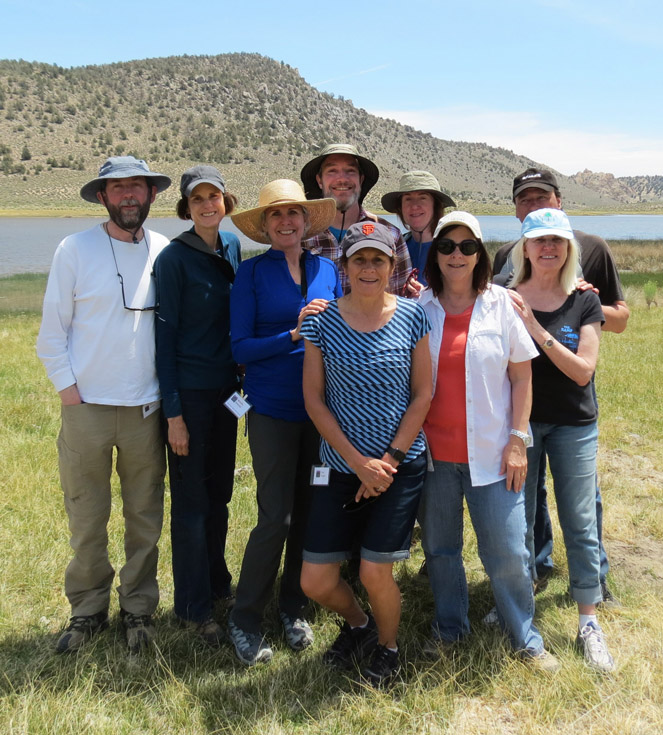
Michelle Browner (left of center, wearing a straw hat) and friends visit Black Lake in 2016.
A Precious Place Protected
The remote Black Lake Preserve has a rich geologic, agricultural, and ecological history. Though the area sees few human visitors, it attracts wildlife from miles around.
As a whole, the Adobe Valley has been designated as an Important Bird Area by the National Audubon Society; and with its alkali lake and surrounding wet meadows, Black Lake Preserve is critical to maintaining healthy bird habitat here. It serves as an important breeding outpost for dozens of waterfowl and migrating bird species. Click here for a list of birds that may be spotted at Black Lake (PDF).
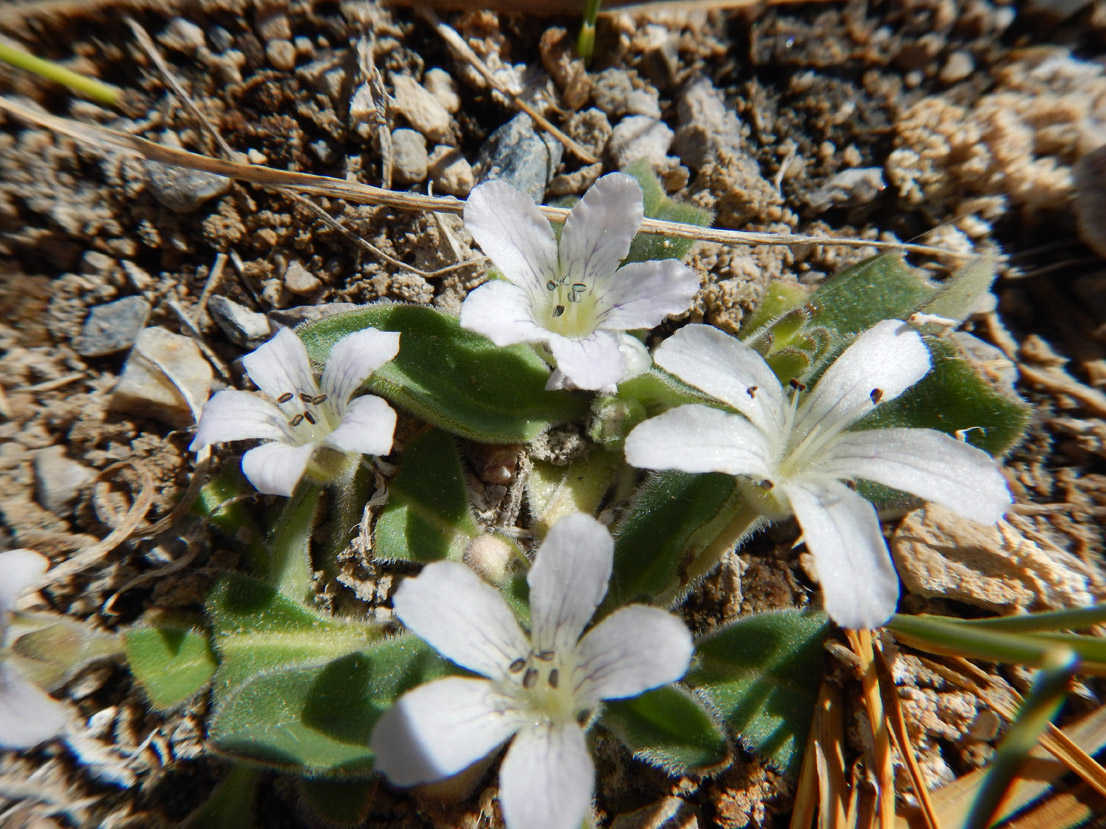
Black Lake Preserve also provides a critical water source for mule deer, golden eagles, amphibians, and other wildlife. And for curious botanists, rare alkali-loving plants can be found near the lake’s shore — such as Hesperochiron californicus, pictured at right. This perennial herb is native to California, and can be seen blooming at Black Lake in the early spring. Another native plant found on the preserve, Inyo County star-tulip (Calochortus excavatus), is imperiled in California due to the rarity of alkali meadow habitat.
In 1846, famed explorer Edward Kern, for whom the Kern River is named, travelled through Adobe Valley as part of John C. Fremont’s Third Expedition. The expedition crossed the Preserve and walked down the notch in the Benton Mountains to the south, en route to a “delightful bath” at what is now Benton Hot Springs. In the 1870s, freshwater springs located on the western portion of the Preserve provided an important watering stop for travelers between Benton and the mining town of Bodie. These springs have served as important water sources for native Paiute families, whose presence in the valley goes back at least 10,000 years.
For those interested in the geology of the Eastern Sierra, Black Lake Preserve is a good place to visit to see the connection between Pleistocene Mono Lake — known as Lake Russell — and the Owens Valley. Adobe Valley was one of two spillways flooded by prehistoric Mono Lake between 760,000 and 100,000 years ago. The hydraulic force and sediment from these floods is still evident in the hills around Black Lake.
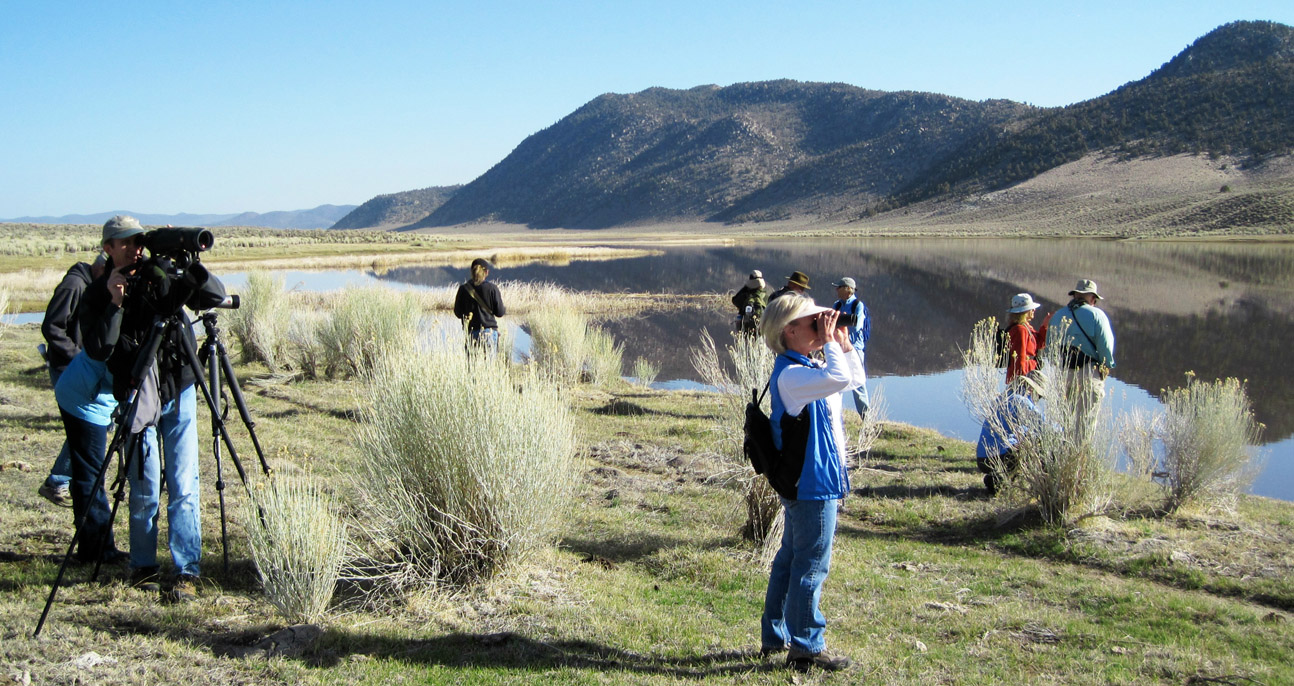
Plan Your Visit to Black Lake Preserve
Thanks to Michelle Browner, this unusual Eastern Sierra landscape is protected forever — and now you can experience its wonders for yourself. Black Lake Preserve is open to the public and can be accessed seasonally when Highway 120 is open.
Directions to Black Lake Preserve
Black Lake Preserve is located in Mono County, California, northwest of the community of Benton. To reach the property from Bishop, drive 34 miles north on Highway 6 to the town of Benton. Turn left (west) on Highway 120. Go through the historic town of Benton Hot Springs and climb the hill to the intersection of Benton Crossing Road and Highway 120. (Be advised that Highway 120 through Adobe Valley is not maintained in winter.) Two primary dirt roads access the property from Highway 120 — both are accessible by most passenger cars, though the presence of shrubs next to the narrow roads means that cars may receive scratches (“Nevada pinstripes”) from wayward branches.
Birdwatching Overlook: From the intersection with Benton Crossing Road, continue north on Highway 120 for 1.4 miles to a short diagonal dirt road on the right leading to the birdwatching overlook. Drive down the short road to park near the fence; we don’t recommend turning left at the fence and driving down the hill, as the road is narrow, sandy, and vegetation grows high in the center. Return to Highway 120 to drive 0.2 miles further north to the main dirt road.
Main Dirt Road: From the intersection with Benton Crossing Road, continue north on Highway 120 for 1.6 miles to the main dirt road on the right. The main dirt road roughly parallels the lake and west edge of the alkali meadow, alongside a barbed wire fence. Please park off the dirt road to allow other travelers to pass your car.
Please do not drive off existing roads, and please do not drive inside the fence that encloses the meadow. You may walk through the fence at any point on the Preserve.
What to Bring
We recommend binoculars, field guides, drinking water (the water found on the preserve is not potable), sunscreen, insect repellent, camera, and a hat. The perennial springs on the property keep much of the meadow wet year-round — if you want to look at plants or birds in the meadows, we recommend wearing rubber boots. If you walk into the meadow through a gate, please remember to keep the gate closed behind you.
Please help us protect the rich diversity of plant and animal life found at the Black Lake Preserve by following these simple rules:
- Enjoy your visit on foot
- Motor vehicles and bicycles are prohibited off of existing roads
- No removal of plants, animals, or cultural artifacts
- Pets allowed only on leash or under immediate voice control
- Horseback riding prohibited
- No harassment of wildlife permitted
- Camping, stoves, and fires are prohibited
- Pack out all trash
- No hunting or shooting
